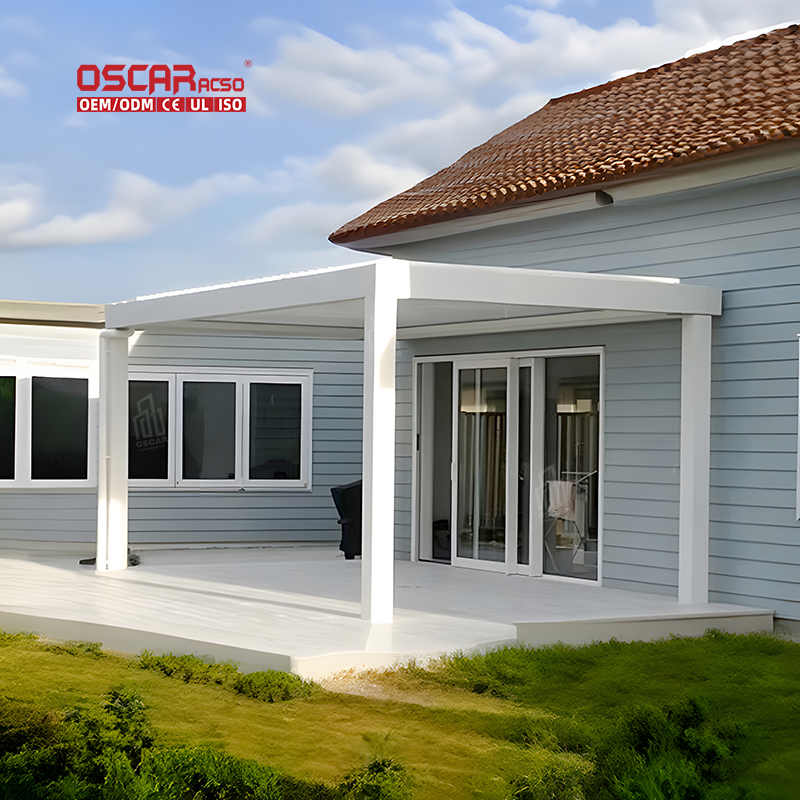Freestanding Pergolas, Your Ultimate Guide to Backyard Freedom
Ever gazed at your backyard and dreamed of a stylish, functional structure that doesn’t rely on your house for support? ...
.jpg)
Ever gazed at your backyard and dreamed of a stylish, functional structure that doesn’t rely on your house for support? Well, you’re in luck! Freestanding pergolas are not only possible but incredibly versatile 🌿. Unlike attached pergolas, which are fixed to a building, freestanding ones stand independently on their own support posts, giving you the freedom to place them anywhere—from the middle of your garden to beside your pool or even on a rooftop terrace .
Why Choose a Freestanding Pergola?
Freestanding pergolas offer unmatched flexibility in design and placement. You’re not limited by walls or rooflines, so you can:
- •
Create a shaded poolside lounge 🏊♂️
- •
Build a cozy garden nook for reading
- •
Frame a dining area on your deck
- •
Install it in a remote part of your property for a peaceful hideaway
They’re also ideal for specific uses, like covering a hot tub to create a private retreat or sheltering an outdoor kitchen from rain—no more rushing indoors when the weather turns!
Freestanding vs. Attached: Which One Suits You?
While attached pergolas blend seamlessly with your home’s architecture, freestanding ones shine in scenarios where flexibility is key. Here’s a quick comparison:
Aspect | Freestanding Pergola
| Attached Pergola |
|---|---|---|
Placement | Anywhere in your yard | Fixed to your home’s wall |
Installation | DIY-friendly; doesn’t require wall modifications | May need professional anchoring |
Privacy | Can be positioned for greater seclusion | Often closer to the house
|
Foundations | Requires robust footings for stability | Relies on house support; fewer posts needed |
If you have a large property or want a distinct outdoor room, freestanding is the way to go. For smaller spaces or a seamless indoor-outdoor flow, attached might be better .
Installation Insights: Foundations and Anchoring
Does a freestanding pergola need concrete? It depends! Lightweight materials like aluminum or wood on a leveled surface might not require concrete, but heavier structures or uneven ground will need concrete footings for stability . For maximum wind resistance, consider:
- •
Point foundations for efficiency
- •
Strip foundations for larger structures
.jpg)
- •
Reinforced foundations (e.g., 85x85x85 cm) in windy areas
Pro tip: Always anchor your pergola securely—whether to concrete, pavers, or deck framing—to prevent collapse in strong winds .
Design Ideas to Inspire Your Project
Freestanding pergolas can be customized to match any style:
- •
Classical: Timeless charm with columns and architectural details.
- •
Contemporary: Clean lines and flat or curved rooflines for a modern look.
.jpg)
- •
Custom: Tailored sizes, shapes, and materials to fit your vision .
Add retractable louvers for adjustable shade, privacy screens for intimacy, or LED lighting for evening ambiance .
Material Matters: Durability and Maintenance
Choose materials based on your climate and maintenance preferences:
- •
Wood: Classic and natural but requires regular upkeep to prevent rot.
- •
Aluminum: Rust-resistant and low-maintenance, perfect for modern designs.
- •
Vinyl: Maintenance-free but may not last as long as other materials.
- •
Composite: Offers the look of wood with minimal upkeep .
In windy areas, aluminum or steel frames can withstand gusts up to 100 mph, while wood and vinyl are better for calmer climates .
Pro Tips for Long-Term Enjoyment
- •
Orientation: Position your pergola to maximize shade during peak sun hours.
- •
Landscaping: Integrate climbing plants like ivy or roses for a natural canopy.
- •
Accessories: Add heaters for winter or misting systems for summer to extend usability .
Remember, a well-built freestanding pergola can boost your home’s value and create a functional outdoor living space for years to come 🏡 .


.jpg)
